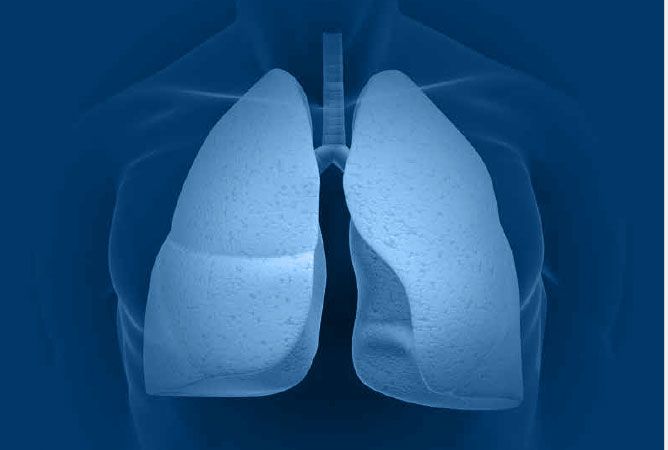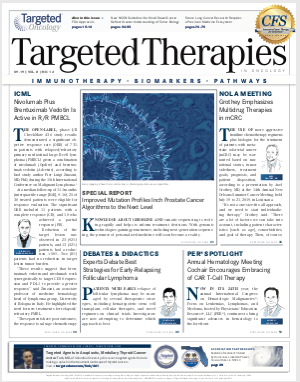Radiation Treatment Stalled by Hurricanes Linked to Poorer Survival Rates in NSCLC
Patients with non–small cell lung cancer on radiotherapy had a worse overall survival when a hurricane disaster was declared for their hospital than patients who did not experience a declaration, according to a study published in<em> JAMA</em>.

Patients with nonsmall cell lung cancer (NSCLC) on radiotherapy had a worse overall survival (OS) when a hurricane disaster was declared for their hospital than patients who did not experience a declaration, according to a study published inJAMA.1
The study, published in July, indicated that patients were 19% more likely to die when hurricane declarations were made during their therapy due to treatment interruptions compared with patients who experienced no declarations. Patients whose therapy was disrupted by hurricanes had an OS of 29 months compared with 31 months for patients who did not experience a disruption.
A total of 1734 patients in the study with inoperable, locally advanced NSCLC experienced treatment interruption because of hurricane disaster declarations compared with 1734 patients with the same cancer at the same hospital who did not have their treatment interrupted. Investigators chose NSCLC for this research because delays in treatment can negatively affect survival rates with as little as 2 days missed, and radiotherapy is more susceptible to hurricane disruptions because it requires electricity and daily treatments.
Leticia Nogueira, PhD, one of the authors of the study, investigated this issue after being part of the emergency response team for Hurricane Harvey in Texas. “The impact natural disasters can have on hospitals’ operability became obvious to me then, and radiation therapy is especially problematic during hurricanes because of its reliance on working electricity, presence of specialized teams for treatment delivery, and patients’ required daily access to the treatment facility,” she said in an email.
“Outpatients [are most vulnerable]...if you’re having an inpatient treatment, nothing gets interrupted. Outpatient [therapy] is interrupted because we close the cancer center during the hurricanes,” Luis E. Raez, MD, chief scientific officer and medical director of Memorial Cancer Institute with the Memorial Healthcare System in Hollywood, Florida, and president of the Florida Society of Clinical Oncology (FLASCO) toldTargeted Therapies in Oncology. Though experienced with contingency plans, Raez was not involved with this study.
According to the study, from 2003 to 2014, 101 disasters were declared, with the longest lasting up to 69 days. The longer the declaration, the worse the OS was for patients. The risk of death increased with the length of the disaster declaration in the first 27 days. After 30 days, the data became nonsignificant. The median observation time was 15 months, during which 1408 patients who experienced hurricane declaration died and 1331 patients who did not experience them died. The 5-year survival rate was 14.5% with hurricane disruption and 15.4% without.
The investigators examined type of insurance, comorbidities, type of treatment facility, and length of drive to the facility as factors of survival. A total of 960 (56.4%) patients on Medicare were exposed to disruptions compared with 944 (55.1%) who were not, and the second-most-common insurance was private, with 520 (30.6%) patients who were exposed and 570 (33.3%) who were not. More than half of both patient populations had no comorbidities, with 1117 (64.4%) and 1133 (65.3%) of those exposed and not exposed, respectively. Most patients were treated at comprehensive or teaching facilities, with 52.0% of each of the patient populations treated at comprehensive facilities and 23.2% of each at teaching facilities. Patients who were exposed drove a mean of 20.4 miles compared with 27.0 miles for those who were not.
Certain other factors could affect patients but were not included in the study, such as smoking history, adverse effects of treatment, and reasons other than a hurricane for taking breaks from therapy.
“Although additional information on patients’ clinical and sociodemographic risk factors would be beneficial, having additional information on modifiable factors, such as facilities’ emergency preparedness, and on patient reported outcomes, such as mental health and physical function, would be most valuable,” Nogueira said.
Nogueira noted the Emergency Preparedness Rule, created by the Centers for Medicare & Medicaid Services, can help health facilities identify patient care needs, as well as those of the staff and the community, in the event of a disaster.
Contingency plans are an important part of patient care, and hospitals have different ways to combat the issues that hurricanes bring. Raez experienced Hurricane Irma when it hit Miami in 2017. His hospital system lost $25 million because it had to shut down. Raez said this hurt patients, even indirectly, because the shutdown damaged the economy of the hospital, in turn affecting the patients.
“That puts the hospital in a bad shape to continue providing care after the hurricane,” Raez said.
As for Hurricane Dorian, the most recent hurricane affecting Florida, Raez said the hospitals implemented procedures like emergency call lists, emergency employee shifts, and post hurricane emergency coverage. They also checked the facilities ahead of time to make sure they were ready for the hurricane.
“As soon as it is over, the most important thing is to be sure that our services are operational for inpatient and outpatient [care],” Raez added.
The Memorial Healthcare System is comprised of 6 hospitals and about 2000 doctors. Its hospitals are built to sustain category 5 hurricanes, with generators protected by extra layers of concrete and built high above ground for protection from flooding and similar threats.
“We have on-call people who, during the hurricane, stay in the hospital and don’t leave... that way the patients are never alone. And we have people who are skilled to show up after the hurricane to relieve the ones who stayed during the hurricane,” Raez said.
For future studies, Nogueira and her fellow investigators will look at different facilities’ emergency preparedness plans and are now working on the design phase for an upcoming study.
“We are currently evaluating the impact of other types of disasters on patients with different cancer types who receive other treatment modalities,” Nogueira said.
Reference:
Nogueira LM, Sahar L, Efstathiou JA, et al. Association between declared hurricane disasters and survival of patients with lung cancer undergo- ing radiation treatment.JAMA. 2019;322(3):269-271. doi: 10.1001/jama.2019.7657.

Biomarker Testing Paves the Way for Better Targeted Therapies in NSCLC
April 16th 2024At a live virtual event, Edward S. Kim, MD, MBA, discussed the evolving landscape of biomarker testing before making treatment decisions for patients with early-stage non–small cell lung cancer (NSCLC).
Read More
Creating Solutions for a 'Continual State of Transition' in Cancer Care
April 15th 2024In a Peers & Perspectives in Oncology feature article, we focus on the importance of the transition-of-care process for patients with cancer as they move from the inpatient to outpatient setting, as well as between lines of therapy with comments from Marc J. Braunstein, MD, PhD, and Michael Shusterman, MD.
Read More